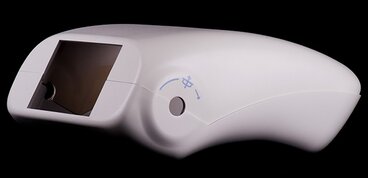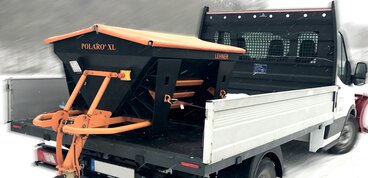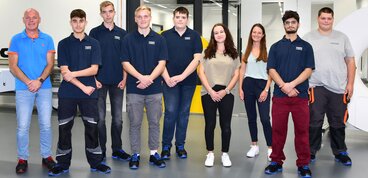Unlock the potential of Reaction Injection Molding (RIM) - Your gateway to heat-resistant, durable, and complex plastic parts! Dive into the world of RIM and transform your manufacturing.
The Versatility of Reaction Injection Molding (RIM) in Modern Manufacturing
Molded plastics have a wide range of commercial and industrial applications - from the smallest, most intricate electronics to heavy machinery, plastic parts are everywhere.
There are many specific molding processes to choose from, and each manufacturer must choose the most efficient way to mold these plastic parts for their products. One of the most popular manufacturing processes for producing high-quality plastic parts is reaction injection molding (RIM).
RIM is a specialized subset of the traditional injection molding process. It is used in a variety of industries and for many types of parts, and for certain applications, RIM is more economical, quicker, and more effective than injection molding.
6 Applications for Reaction Injection Molding (RIM)
The RIM process is commonly used to fabricate low volumes of large, complex parts, making it well-suited to industrial and commercial products that require intricate or bulky components.
Here are a few of the most common applications of reaction injection molding:
1. Products Exposed to High Temperatures
Household and kitchen appliances as well as some medical devices tend to generate heat. While products made from the thermoplastic resins used in traditional injection molding could warp, melt, or damage electronics when exposed to heat, RIM products have incredible heat resistance. That makes reaction injection molding ideal for products exposed to higher temperatures.
2. Products That Need to be Durable and/or Chemically Resistant
RIM products are resistant to heat, water, and chemicals like corrosive acids and solvents. Additionally, they are highly durable because the resulting polyurethane plastic parts are more resistant to wear and tear than products produced by injection molding. Heavy equipment consoles, medical device covers, recreational vehicles, and other products with plastic parts can benefit from the durability and chemical resistance of RIM.
3. Products with Complex Parts and Varying Wall Thicknesses
The RIM process is well-suited for creating parts that require design flexibility, such as analytical machines in the medical field, electrical enclosures, or panels and doors for a variety of plastic parts. With the low viscosity materials used in the process, manufacturers can use intricate molds to construct highly complex parts with curves, encapsulated components, and more.
Similarly, RIM-produced parts can have varying wall thicknesses. While injection molded parts must be uniform in order to prevent the part from deforming as it cools, RIM allows for varying wall thicknesses within the same part without built in stress, sink or distortion in the part.
4. Large Component Manufacturing
Thanks to its ability to handle complex designs, deep draws, strength-to-weight ratio, and smooth, cosmetic finishes, RIM is a popular choice for large component manufacturing, such as automotive bumpers, large covers for machines such CT’s or MRI’s, gas pump covers and mass transit fare vending covers.
Producing a large component through injection molding requires the production of several smaller parts that then need to be assembled to create the whole product. Alternatively, manufacturers can use RIM to produce one large component - eliminating the costs and resources required to assemble smaller injection molded parts into one larger piece.
Especially in smaller volumes of less than 5,000 units, RIM is a low-cost option for manufacturing large components.
5. Products with Encapsulated Parts
Magnets, batteries, hinges, antennas, threaded inserts, circuit boards, metal rods, and other fragile items can be directly encapsulated into plastic parts to reduce cost and increase quality.6. Products That Benefit from Fewer Parting Lines
RIM allows for a superior cosmetic appearance and reduces the number of parting lines on plastic products. Since manufacturers can use RIM to encapsulate items into a plastic part as well as produce larger, complex parts in one piece, the process minimizes seams, parting lines, and weak points that might detract from the product’s appearance. Applications include products like device or electrical enclosures or housings as well as panels and doors on medical equipment.Conclusion:
Reaction Injection Molding (RIM) emerges as a versatile and efficient solution in the world of plastic manufacturing. Its ability to create high-quality plastic parts with exceptional heat resistance, durability, design flexibility, and reduced parting lines makes it a standout choice for various applications. From withstanding high temperatures in household appliances to crafting intricate components for medical devices, from producing large, complex parts in a cost-effective manner to encapsulating fragile elements within plastic, RIM proves its worth across diverse industrial and commercial products. With RIM, the future of plastic manufacturing looks promising, offering a blend of heat resistance, durability, and superior aesthetics that are increasingly essential in today's market.
#RIM #ReactionInjectionMolding #ReactionInjectionMoldingApplications #PlasticManufacturing #WorldOfPlasticManufacturing
The last 3 blog entries

Innovativ und dekorativ: PUR mit Oberfläche kombiniert – ein altbewährtes Paar für neuste Anwendungen
Sep 6, 2023
Read article
Salt Spreader Container made from PUR
Apr 4, 2023
Read article
Ein neuer Anfang! Ein Willkommen an unsere zukünftigen Experten
Sep 4, 2023
Read article
